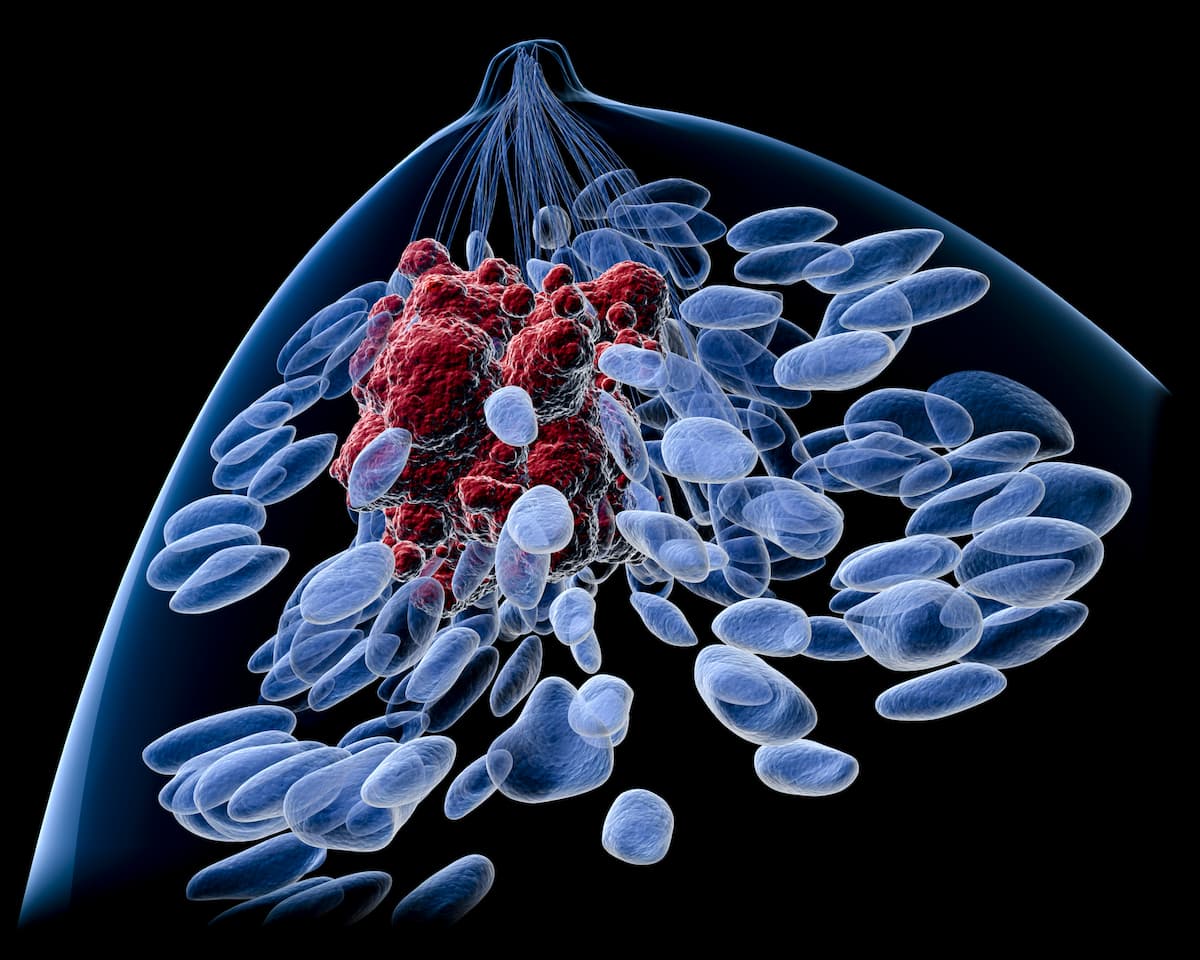Olanzapine Combo Reduces Chemo-Induced Nausea, Vomiting in Breast Cancer
Patient-reported satisfaction was higher in patients with breast cancer treated with olanzapine vs those who underwent treatment with placebo.
After a median follow-up of 168 hours, the complete response rate for the duration of treatment in the olanzapine group was 58.1% vs 35.5% with placebo, showing a difference of 22.7%.

The addition of olanzapine (Zyprexa) at a dose of 5 mg to triplet antiemetic therapy, including a NK-1 receptor antagonist, palonosetron (Aloxi), and dexamethasone, exhibited significant overall antiemetic efficacy in patients with breast cancer previously treated with anthracycline plus cyclophosphamide-based chemotherapy compared with placebo, according to results from a phase 3 trial (jRCT1031200134) published in Lancet Oncology.
After a median follow-up of 168 hours (IQR, 168-168), the complete response (CR) rate for the duration of treatment in the olanzapine group was 58.1% vs 35.5% with placebo, showing a difference of 22.7% (95% CI, 14.0%-31.4%; P <.0001). In the acute phase, characterized as the first 24 hours after treatment, the CR rates were 76.4% vs 55.6%. In the extended delayed phase, characterized as 24 to 168 hours post-treatment, the rates were 62.9% vs 41.5%.
Additional data revealed that the time to treatment failure was significantly longer in the olanzapine arm, with it not being reached vs a median of 37.3 hours (95% CI, 22.2-49.5) in the placebo arm (stratified HR, 0.495; 95% CI, 0.385-0.635; P <.0001). Furthermore, 3 (~1%) patients in the placebo group vs 0 patients in the olanzapine group were censored before 168 hours. Two patients underwent censoring at 48 hours and 1 underwent censoring at 72 hours, with censoring occurring after the adverse events (AEs) or suspicion of AEs.
“[T]o our knowledge this is the first double-blind, randomised, placebo-controlled phase 3 trial to show the significant overall antiemetic efficacy of post-chemotherapeutic administration of 5 mg olanzapine added to a triplet antiemetic regimen, including NK-1 receptor antagonists, palonosetron, and dexamethasone, in patients at high risk of emesis receiving anthracycline plus cyclophosphamide-based chemotherapy without severe sedative [adverse] effects,” Mitsue Saito, MD, PhD, MBA, of the Department of Breast Oncology at Juntendo University Hospital in Bunkyo, Tokyo, Japan, wrote in the publication with study coinvestigators. “The findings represent a substantial advancement in managing chemotherapy-induced nausea and vomiting in patients with breast cancer and provide assurance that the safe and effective administration of olanzapine can be achieved at a dosage of 5 mg.”
Investigators in the phase 3 trial randomly assigned patients with stage I to III breast cancer, in a 1:1 ratio, to receive the triplet antiemetic therapy with either olanzapine (n = 251) or placebo (n = 249). All patients received 0.75 mg of palonosetron 30 minutes before chemotherapy, oral aprepitant (Emend) at a dose of 125 mg 1 hour before chemotherapy and 80 mg on days 2 and 3 of treatment, or 150 mg of intravenous fosaprepitant, as well as 9.9 mg of intravenous dexamethasone. Treatment was given as a single course over 4 days in the first cycle of anthracycline plus cyclophosphamide-based chemotherapy.
Patients received 5 mg of oral olanzapine or matching placebo on day 1 within 5 hours of chemotherapy and after an evening meal on days 2 and 4. If a patient was administered intravenous fosaprepitant instead of oral aprepitant, oral aprepitant was not administered on days 2 and 3 of treatment.
The median age in the olanzapine and placebo groups was 52 years (IQR, 45-60) vs 51 years (IQR, 46-60), respectively. A total of 99% vs 100% of patients in each respective group had an ECOG performance score of 0. The most commonly received chemotherapy regimens included epirubicin plus cyclophosphamide (37% vs 34%), dose dense epirubicin plus cyclophosphamide (27% vs 32%), and doxorubicin plus cyclophosphamide (28% vs 25%).
The primary end point of the trial was CR rate. Secondary end points included complete control rate, total control rate, time to treatment failure, safety, and satisfaction with antiemetic therapy.
The most common severe adverse effects (SAEs) in the olanzapine and placebo groups included anorexia (13% vs 38%) and constipation (12% vs 16%), with severe concentration impairment reported in 10% and 14% of patients, respectively. Additionally, experimental grade 3 to 4 AEs in either arm included somnolence (2% vs 0%) and concentration impairment (1% vs 0%), with no grade 5 AEs or treatment-related deaths observed on study. Three patients in the placebo arm discontinued treatment due to the presence or suspicion of drug-related toxicities.
The proportion of patients reporting satisfaction with antiemetic therapy was higher on a 7-point scale in the olanzapine group vs the placebo group.
Reference
Saito M, Lihara H, Shimokawa M, et al. Overall efficacy and safety of olanzapine 5 mg added to triplet antiemetics for an anthracycline-containing regimen in patients with breast cancer: a phase 3, double-blind, randomised, placebo-controlled trial. Lancet Oncol. 2025;26:960-970. doi:10.1016/S1470-2045(25)00233-5
Gedatolisib Combo With/Without Palbociclib May Be New SOC in PIK3CA Wild-Type Breast Cancer
December 21st 2025“VIKTORIA-1 is the first study to demonstrate a statistically significant and clinically meaningful improvement in PFS with PAM inhibition in patients with PIK3CA wild-type disease, all of whom received prior CDK4/6 inhibition,” said Barbara Pistilli, MD.